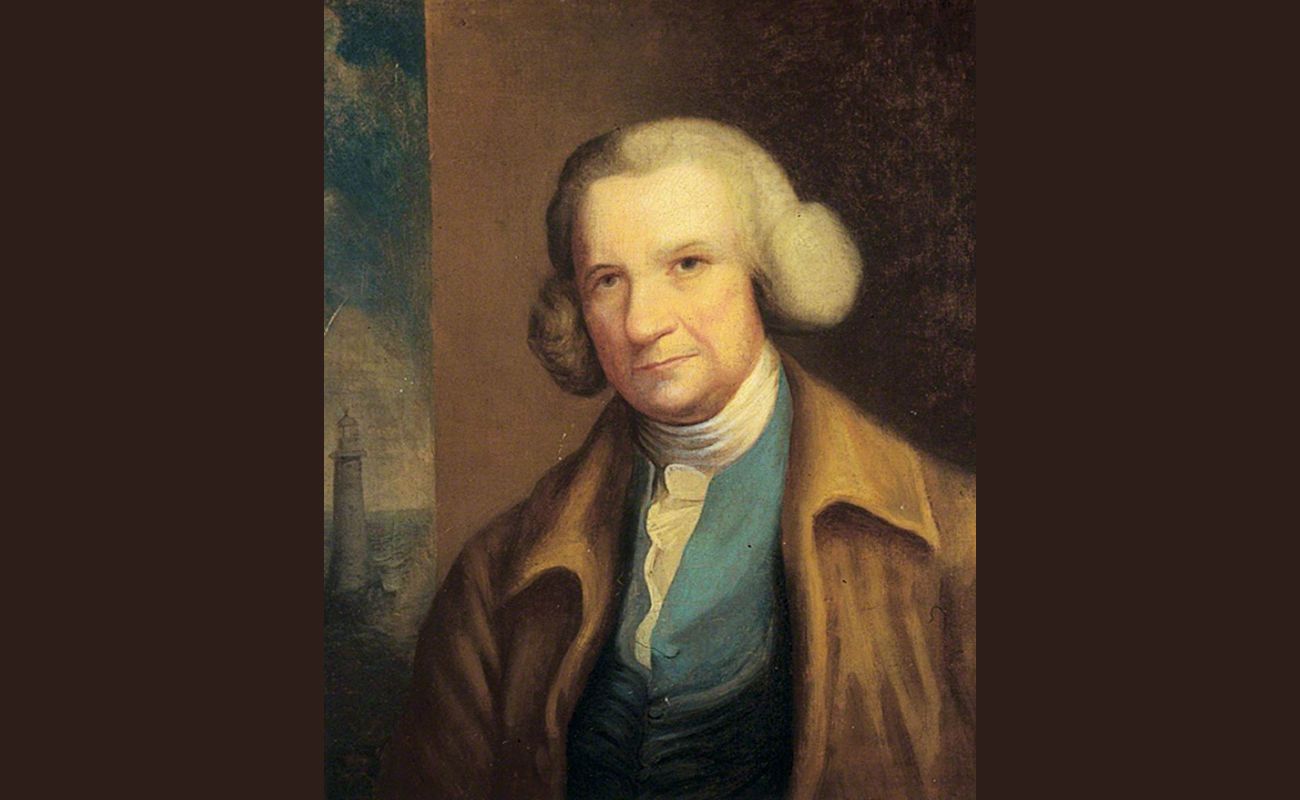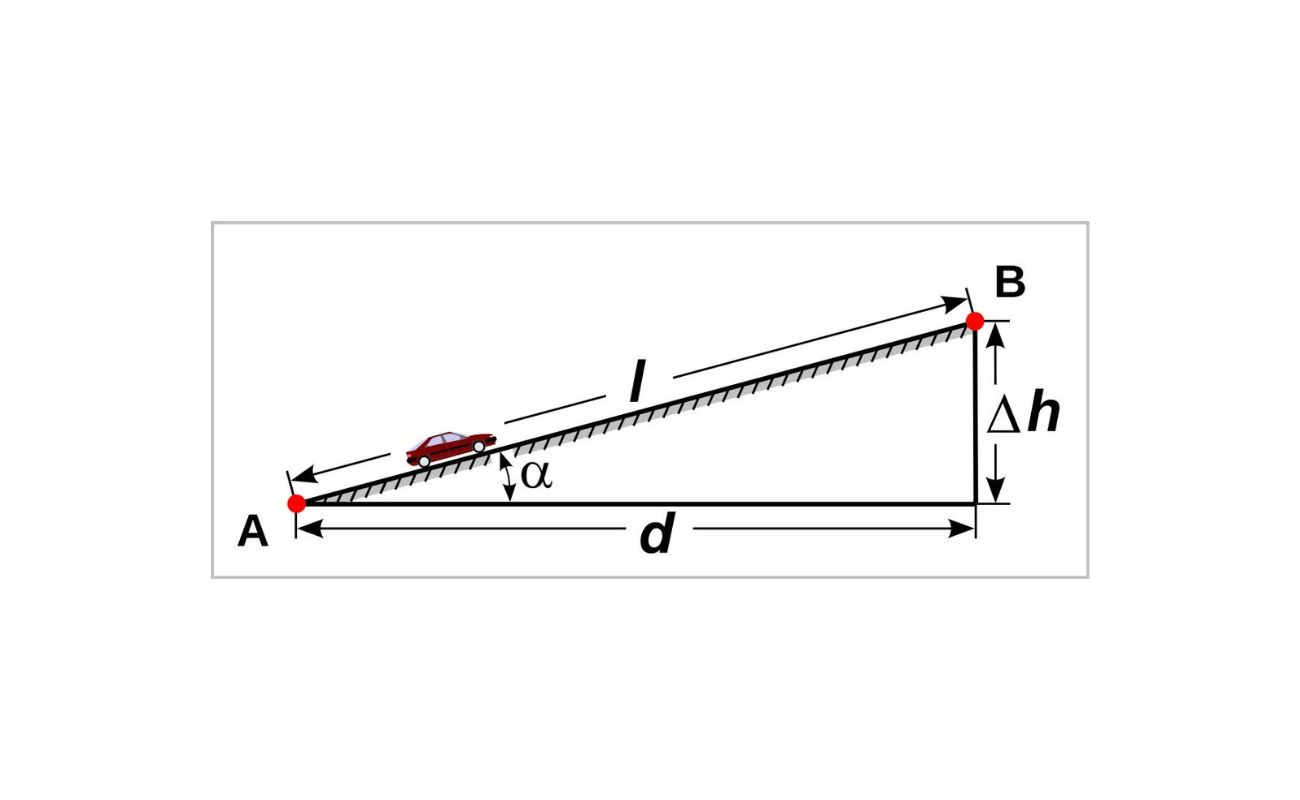Home>diy>Planning & Engineering>Who Is The Father Of Civil Engineering


Planning & Engineering
Who Is The Father Of Civil Engineering
Modified: January 4, 2024
Discover the father of civil engineering and the importance of planning engineering in this comprehensive guide. Learn about the contributions made by pioneers in the field and how it impacts modern infrastructure.
(Many of the links in this article redirect to a specific reviewed product. Your purchase of these products through affiliate links helps to generate commission for Storables.com, at no extra cost. Learn more)
Introduction
Civil engineering is a diverse and dynamic field that plays a crucial role in shaping the infrastructure we rely on every day. From the construction of towering skyscrapers to the development of transportation networks, civil engineering encompasses a wide range of engineering disciplines that are essential for the progress and well-being of society.
But have you ever wondered who is the father of civil engineering? Who were the early innovators that paved the way for this remarkable field? In this article, we will explore the contributions of these trailblazers and their lasting impact on the world of civil engineering.
Throughout history, there have been key figures who revolutionized the way structures were built and shaped the practices that we still follow today. From ancient civilizations to the modern era, these visionary engineers have left an indelible mark on the development of civil engineering as we know it.
Join us on this journey as we delve into the lives and legacies of these extraordinary individuals, starting with the early innovators in the field of civil engineering.
Key Takeaways:
- The father of civil engineering, John Smeaton, revolutionized the field with innovative lighthouse construction and the use of hydraulic lime, setting a benchmark for engineering excellence and precision.
- Modern visionaries like Gustave Eiffel, Fazlur Rahman Khan, and Zaha Hadid have reshaped civil engineering, pushing the boundaries of what is possible and inspiring innovation in sustainable design and architectural masterpieces.
Read more: What Is A Civil Engineering Technician
Early Innovators in Civil Engineering
The origins of civil engineering can be traced back to ancient civilizations, where early innovators paved the way for the development of sophisticated engineering techniques. One such civilization is ancient Egypt, where the construction of colossal structures like the Great Pyramids of Giza demonstrated remarkable engineering prowess.
The Egyptians were masters of architectural design, utilizing precise calculations and meticulous planning to construct the pyramids with precision and durability. With an intricate understanding of materials and structural stability, they laid the foundation for future advancements in civil engineering.
In ancient Greece, the renowned mathematician and engineer, Archimedes, made significant contributions to the field of civil engineering. He devised ingenious machines, such as the Archimedean screw, which facilitated the efficient transportation of water. Archimedes’ discoveries and inventions revolutionized irrigation systems and water distribution, ensuring the prosperity of ancient Greek cities.
Fast forward to the Renaissance period, and we encounter the brilliant mind of Leonardo da Vinci. Although primarily known as an artist, da Vinci’s engineering designs were far ahead of his time. His sketches and blueprints showcased innovative ideas for bridges, canals, and even flying machines. Da Vinci’s ability to blend art and engineering laid the groundwork for the interdisciplinary approach that is now integral to civil engineering.
Another notable figure in the early history of civil engineering is John Smeaton. Often referred to as the “Father of Civil Engineering,” Smeaton was a prolific British engineer who revolutionized the construction of lighthouses. In the 18th century, Smeaton introduced an innovative use of hydraulic lime, strengthening lighthouse structures and making them more resistant to erosion by the sea.
One of Smeaton’s most significant achievements was the construction of the Eddystone Lighthouse. This landmark project showcased his meticulous attention to detail, as he designed a structure that could withstand the harsh conditions of the sea. Smeaton’s groundbreaking methodologies and emphasis on engineering precision set the stage for modern civil engineering practices.
These early innovators laid the foundation for the field of civil engineering, inspiring future generations to push the boundaries of what was possible. Their ingenuity and dedication to excellence set in motion an ongoing quest for innovation and the pursuit of safer, more sustainable structures.
The Contributions of John Smeaton
John Smeaton, often referred to as the “Father of Civil Engineering,” made significant contributions to the field during the 18th century. His pioneering methods and innovative designs established him as one of the most influential figures in the history of civil engineering.
One of Smeaton’s notable accomplishments was his revolutionary work in lighthouse construction. Prior to Smeaton’s time, lighthouses were frequently built using timber, which often deteriorated quickly due to exposure to the elements. Smeaton recognized the need for more durable materials and techniques to ensure the longevity of these vital structures.
Smeaton experimented extensively with different materials and eventually introduced the use of hydraulic lime mortar in lighthouse construction. This groundbreaking innovation significantly increased the durability and erosion resistance of the structures. Smeaton’s use of hydraulic lime not only improved the longevity of lighthouses but also set a precedent for the application of novel materials in future civil engineering projects.
One of Smeaton’s most renowned feats was the design and construction of the Eddystone Lighthouse. Situated on the treacherous Eddystone Rocks off the coast of Cornwall, England, this lighthouse needed to withstand the relentless pounding of the sea and resist erosion for an extended period.
Smeaton’s approach to the project was meticulous and precise. He utilized interlocking stone blocks with dovetailed joints, a technique that significantly enhanced the structural stability of the lighthouse. Additionally, he created an innovative foundation using a mixture of hydraulic lime and pozzolana, a volcanic material known for its strength.
By employing these innovative design principles and construction methods, Smeaton successfully created a lighthouse that withstood the harsh conditions of the sea for over 120 years until it was replaced by a newer structure. His meticulous planning and attention to detail set a benchmark for engineering excellence in the field of civil engineering.
Beyond lighthouse construction, Smeaton also made significant contributions to various other areas of civil engineering. He designed and constructed several canals, including the Calder and Hebble Navigation, which facilitated efficient transportation of goods. Smeaton’s understanding of water flow and hydraulic engineering principles enabled him to create canals that were not only functional but also sustainable.
Smeaton’s contributions to civil engineering extend far beyond his individual projects. He was instrumental in establishing the Society of Civil Engineers, which later evolved into the Institution of Civil Engineers. This professional body played a crucial role in advancing the field of civil engineering and promoting the exchange of knowledge and best practices among engineers.
John Smeaton’s pioneering engineering techniques and unwavering commitment to innovation and precision continue to inspire and influence civil engineers to this day. His contributions have left an indelible mark on the field and serve as a testament to the transformative power of engineering in shaping the world we live in.
The father of civil engineering is considered to be John Smeaton, who is known for his pioneering work in the field and is often referred to as the “father of civil engineering.”
The Legacy of Sir Marc Isambard Brunel
Sir Marc Isambard Brunel, a prolific engineer and inventor of French descent, made immense contributions to the field of civil engineering during the 19th century. His innovative designs and engineering achievements revolutionized various industries, leaving a lasting legacy that continues to shape the world today.
Brunel’s most significant legacy lies in his groundbreaking work in the field of tunnel construction. While working on the Thames Tunnel, Brunel faced numerous challenges due to the difficult conditions and unprecedented nature of the project. However, he persevered and successfully completed the tunnel, making it the world’s first successfully constructed tunnel beneath a navigable river.
Brunel’s engineering prowess was evident in his use of an innovative tunneling shield, a device that protected workers and provided stability during excavation. This revolutionary invention was a key factor in the successful construction of the Thames Tunnel and laid the groundwork for future tunneling projects around the world.
Another notable project that showcases Brunel’s engineering ingenuity is the construction of the Clifton Suspension Bridge in Bristol, England. This iconic structure is not only a feat of engineering but also a testament to Brunel’s vision and determination.
Brunel designed the bridge with a unique and elegant suspension system, using wrought iron chains and massive stone piers. The innovative design and construction techniques employed by Brunel ensured the bridge’s longevity and made it a landmark of engineering excellence.
In addition to his contributions to civil engineering, Brunel played a vital role in the development of the railway industry. He was responsible for the design and construction of the Thames Tunnel, which became a railway tunnel connecting London with southeast England.
Brunel’s work extended beyond the engineering field, as he also made notable contributions as an inventor and entrepreneur. He invented the world’s first tunnelling shield, a device that significantly improved the efficiency and safety of tunnel construction. He also developed a printing press capable of producing continuous prints, laying the foundation for modern print technology.
Brunel’s legacy extends to his son, Isambard Kingdom Brunel, who followed in his footsteps and became one of the most influential engineers of the Victorian era. Isambard Kingdom Brunel’s innovative designs, including the Great Western Railway and the SS Great Britain, further solidified the family’s impact on engineering and technological advancements.
The legacy of Sir Marc Isambard Brunel has had a profound influence on the field of civil engineering. His pioneering work in tunnel construction, bridge design, and railway engineering set new standards for engineering excellence. Brunel’s innovative mindset, attention to detail, and commitment to pushing the boundaries of what was possible continue to inspire engineers and shape the infrastructure we rely on today.
Notable Figures in Modern Civil Engineering
As civil engineering has evolved over time, numerous individuals have made significant contributions to the field. These modern innovators have brought new technologies, methodologies, and sustainable practices to the forefront of civil engineering. Let’s explore some of the notable figures who have shaped modern civil engineering.
1. Gustave Eiffel: Known for designing the iconic Eiffel Tower in Paris, Gustave Eiffel was a renowned civil engineer of the late 19th century. His expertise in structural engineering and innovative use of wrought iron revolutionized the construction industry. The Eiffel Tower stands as a testament to his engineering prowess and has become a symbol of France and an architectural masterpiece.
2. Fazlur Rahman Khan: Often referred to as the “father of modern structural engineering,” Fazlur Rahman Khan was an influential Bangladeshi-American engineer. He revolutionized skyscraper design by introducing the concept of the bundled tube structure, which allowed for taller and more efficient buildings. Khan’s designs, such as the Willis Tower in Chicago, pushed the boundaries of what was considered possible in the world of high-rise construction.
3. Renzo Piano: Renzo Piano is an Italian architect and engineer who has made significant contributions to the field of civil engineering through his innovative designs. He is known for creating structures that blend seamlessly with their surroundings and prioritize sustainability. Some of his notable works include the Shard in London and the Centre Georges Pompidou in Paris.
4. Zaha Hadid: Zaha Hadid, an Iraqi-British architect, was a trailblazer in the field of parametric design and fluid architecture. Her avant-garde designs challenged traditional notions of form and space. Hadid’s unique approach to engineering and design can be seen in projects such as the Guangzhou Opera House in China and the London Aquatics Centre.
5. Elon Musk: While primarily known as a business magnate and entrepreneur, Elon Musk has also made contributions to civil engineering through his ambitious transportation projects. His concept of the Hyperloop, a high-speed transportation system, aims to revolutionize the way we travel. Musk’s innovative thinking and relentless pursuit of technological advancement have sparked a renewed interest in the future of transportation engineering.
6. Shigeru Ban: Shigeru Ban is a Japanese architect known for his pioneering work in sustainable architecture and disaster relief. His designs prioritize environmentally friendly materials and innovative construction techniques. Ban’s creations range from temporary shelters for disaster-stricken areas to iconic structures such as the Pompidou-Metz museum in France.
These notable figures represent a fraction of the many talented engineers and architects who have made significant contributions to modern civil engineering. Their visionary ideas, innovative designs, and commitment to sustainability have pushed the boundaries of what is possible in the field, shaping the world we live in today.
As civil engineering continues to evolve, it is individuals like these who will shape the future of the field, addressing the challenges of climate change, urbanization, and societal needs.
Read more: What Is Chainage In Civil Engineering
Conclusion
Civil engineering has come a long way since its inception, thanks to the contributions of remarkable individuals throughout history. From the early innovators who laid the groundwork for engineering practices to modern visionaries shaping the future of the field, each figure has left an indelible mark on the world of civil engineering.
From the architectural wonders of ancient civilizations to the towering skyscrapers and intricate transportation networks of the modern era, civil engineering has played a crucial role in shaping the infrastructure that supports society. The field has continually evolved, adapting to new challenges, technological advancements, and environmental considerations.
Figures like John Smeaton, the father of civil engineering, and Sir Marc Isambard Brunel, who revolutionized tunnel construction, set the stage for engineering excellence and innovative thinking. Their groundbreaking techniques and meticulous attention to detail paved the way for future generations of engineers.
In the modern era, illustrious figures such as Gustave Eiffel, Fazlur Rahman Khan, Renzo Piano, Zaha Hadid, Elon Musk, and Shigeru Ban have pushed the boundaries of what is possible in civil engineering. Their architectural masterpieces, sustainable designs, and transformative concepts have reshaped skylines and inspired innovation in the field.
Civil engineering is not just about constructing buildings, bridges, and tunnels — it is about creating structures that are safe, sustainable, and contribute to the well-being of society. It involves a deep understanding of materials, structures, environmental impact, and the latest technological advancements.
As the world faces unprecedented challenges such as climate change, population growth, and urbanization, the role of civil engineering becomes even more critical. Engineers and architects continue to seek innovative solutions to make our cities more sustainable, resilient, and efficient.
The legacy of these notable figures serves as a reminder of the limitless possibilities in civil engineering. Their passion, drive, and groundbreaking contributions have shaped the field into what it is today and continue to inspire the next generation of civil engineers.
As we move into the future, civil engineering will continue to play a vital role in designing and constructing the infrastructure that sustains our modern society. It is through the dedication and brilliance of these exceptional individuals that we can envision a world of safer, more sustainable, and technologically advanced structures.
So, the next time you pass by a towering skyscraper, cross a majestic bridge, or witness a civil engineering marvel, remember the remarkable individuals who have dedicated their lives to making our world a better place through the art and science of civil engineering.
Frequently Asked Questions about Who Is The Father Of Civil Engineering
Was this page helpful?
At Storables.com, we guarantee accurate and reliable information. Our content, validated by Expert Board Contributors, is crafted following stringent Editorial Policies. We're committed to providing you with well-researched, expert-backed insights for all your informational needs.















0 thoughts on “Who Is The Father Of Civil Engineering”